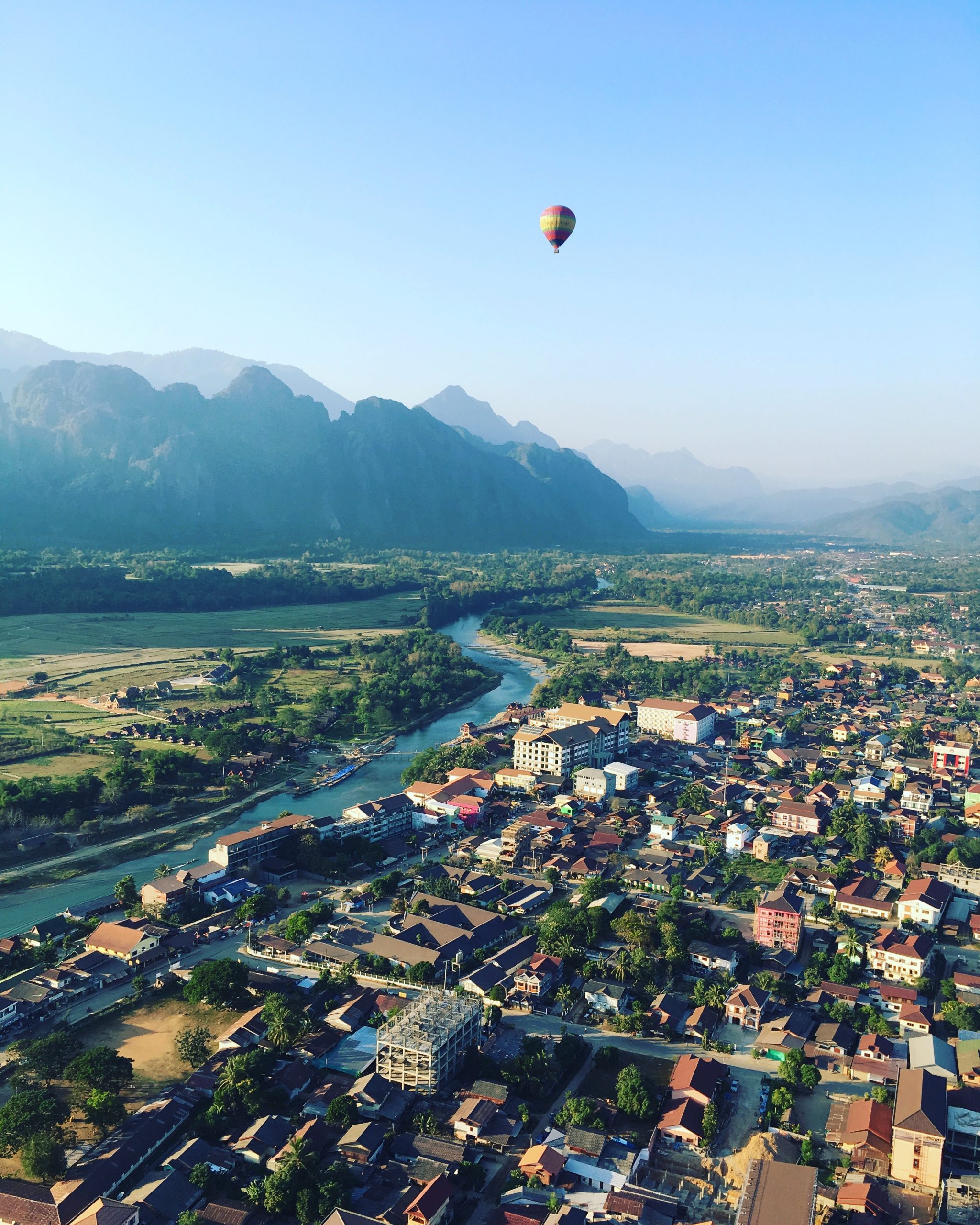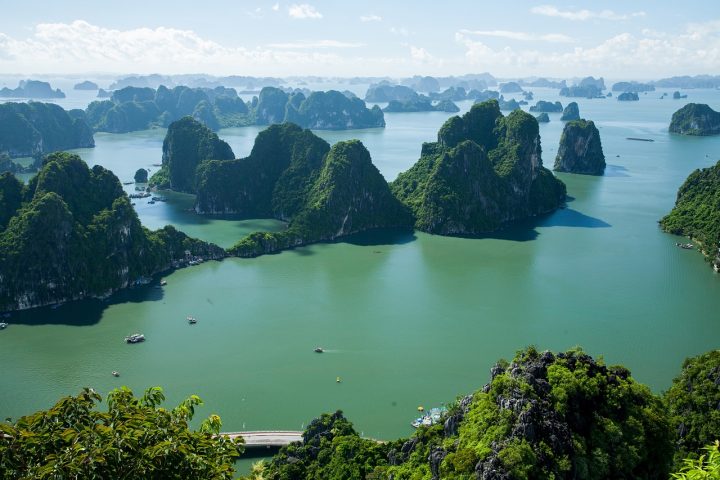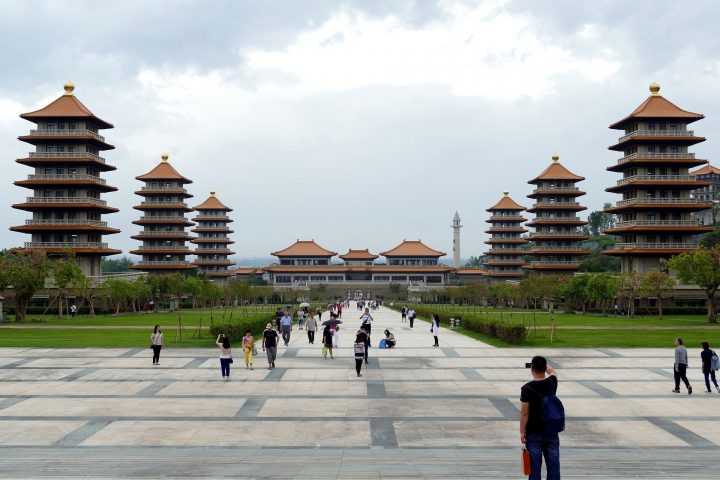Laos, a landlocked country often overshadowed by its more renowned neighbors like Vietnam, Thailand, and Cambodia, holds a unique charm and a fascinating history. Referred to as the “Land of a Million Elephants,” Laos boasts a rich cultural heritage that echoes through its landscapes. Despite its tumultuous past, including being the most heavily bombed country in the world, Laos stands as a testament to resilience and cultural significance.
As a completely landlocked nation, Laos lacks direct access to the sea, making it an off-the-beaten-path destination for many travelers. Regrettably, this geographical disadvantage has led some people to underestimate the beauty and allure that Laos has to offer. However, for those willing to venture beyond the more trodden paths, Laos presents an opportunity to explore a hidden gem in Southeast Asia.
Laos boasts a long and storied history, evident in the remnants of its past scattered throughout the country. From the awe-inspiring remnants of the prehistoric Khmer Empire to the illustrious Lan Xang Kingdom, the echoes of Laos’ past are palpable. These historical vestiges serve as a captivating journey through time, allowing visitors to witness the country’s evolution and cultural diversity.
One such testament to Laos’ historical and cultural significance is the UNESCO World Heritage site of Luang Prabang. This enchanting city perfectly blends traditional Lao architecture with the influence of French colonialism, creating a captivating atmosphere that is both unique and mesmerizing. The ancient temples, charming streets, and vibrant markets of Luang Prabang offer visitors a glimpse into the country’s soul and are a must-visit for those seeking an authentic cultural experience.
However, it is essential to acknowledge the scars that Laos bears from its turbulent past. During the American secret war from 1964 to 1973, Laos endured unimaginable suffering as it became the most bombed country in history. The rain of bombs, intended to disrupt the Ho Chi Minh Trail, devastated the country’s landscape and had a profound impact on its people. To this day, unexploded ordnances remain a threat and a reminder of the painful legacy of war.
Despite these hardships, the people of Laos have shown remarkable resilience and strength. Today, the country is slowly rebuilding and healing from the wounds of the past, focusing on sustainable development and promoting peace. Efforts are being made to clear unexploded ordnances, protect cultural heritage sites, and foster economic growth.
Laos’s allure lies not only in its historical and cultural significance but also in its natural beauty. The country boasts breathtaking landscapes, including lush forests, cascading waterfalls, and tranquil rivers. Adventurers can embark on treks through dense jungles, explore mystical caves, or relax by the serene waters of the Mekong River. Nature enthusiasts will find solace in Laos’ untouched wilderness and the abundance of unique flora and fauna.
1. Best Time to Visit
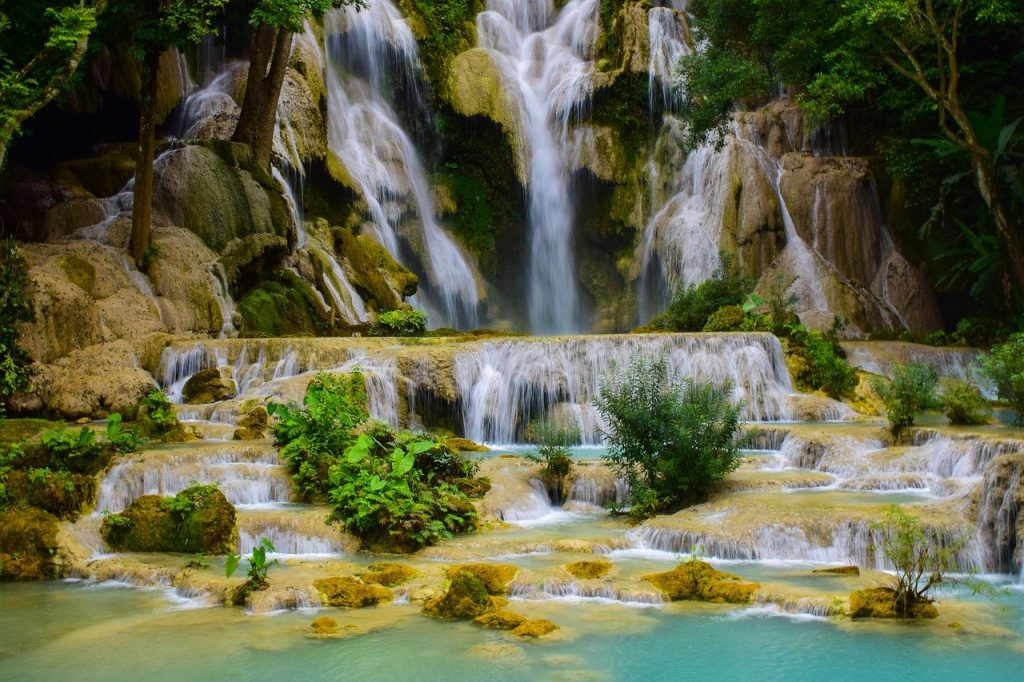
Laos, a country characterized by its diverse seasons and weather patterns, offers visitors a unique experience throughout the year. With both rainy and dry seasons, the choice of when to visit depends on personal preferences and the desired activities. However, it is generally recommended to explore Laos during the dry season, which spans from November to April, as it offers favorable conditions for city visits and countryside exploration.
During the dry season, visitors can expect less or even minimal rainfall, allowing for uninterrupted outdoor activities and sightseeing. This period is particularly suitable for exploring the cities and immersing oneself in the cultural wonders that Laos has to offer. Whether it’s visiting historical sites, experiencing local festivals, or indulging in traditional cuisine, the dry season presents an ideal opportunity to delve into the vibrant tapestry of Lao culture.
That being said, there is a unique charm to visiting Laos during the rainy season as well. From approximately May to October, the countryside undergoes a stunning transformation, as lush green landscapes emerge in the wake of rainfall. This period provides a breathtaking vista for nature lovers and photographers, who can capture the country’s verdant beauty at its peak. While outdoor activities may be slightly hindered by occasional showers, those willing to embrace the rain will be rewarded with a truly awe-inspiring experience.
2. Visit Vientiane da capital
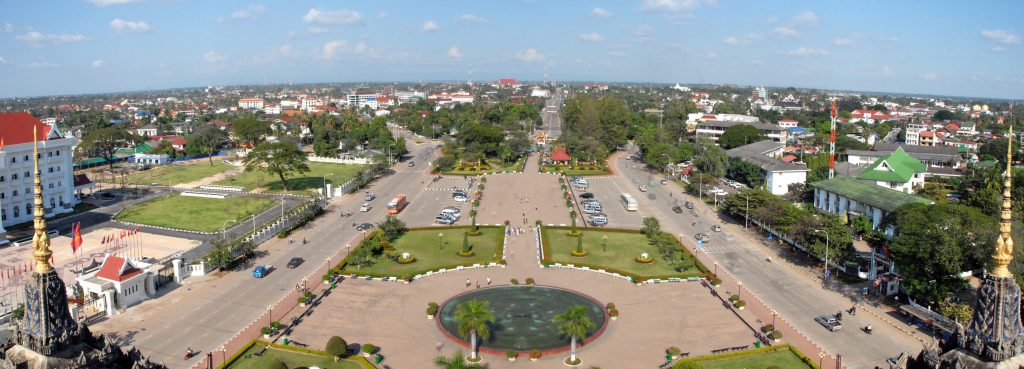
Vientiane, the capital city of Laos, is a captivating blend of historical charm and a serene tourist environment. As you navigate through the city, you will encounter enchanting temples that offer a glimpse into the world of Buddhist architecture and intricate adornments. Vientiane is further enhanced by its picturesque riverfront, where the gentle flow of the Mekong River creates a tranquil ambiance.
Strolling along the riverfront, you will witness locals and visitors alike indulging in leisurely activities, taking in the serene atmosphere that permeates the area. The riverside is a haven for relaxation, with people enjoying lazy moments by the water’s edge. This idyllic setting offers a peaceful retreat from the hustle and bustle of everyday life.
Vientiane also boasts vibrant night markets that add a splash of color to the cityscape. These bustling markets are a delight for the senses, offering a wide array of local cuisine, handicrafts, and cultural treasures. Exploring the vibrant stalls, you can tantalize your taste buds with delectable Lao dishes and immerse yourself in the rich tapestry of local crafts and souvenirs.
Unlike typical bustling South Asian cities, Vientiane exudes a distinctive ambiance. It manages to strike a balance between being a popular tourist destination and maintaining a sense of calm and tranquility. While it offers a tourist-friendly environment, the city remains peaceful and serene, allowing visitors to unwind and connect with its unique charm on a deeper level.
3. Mekong River
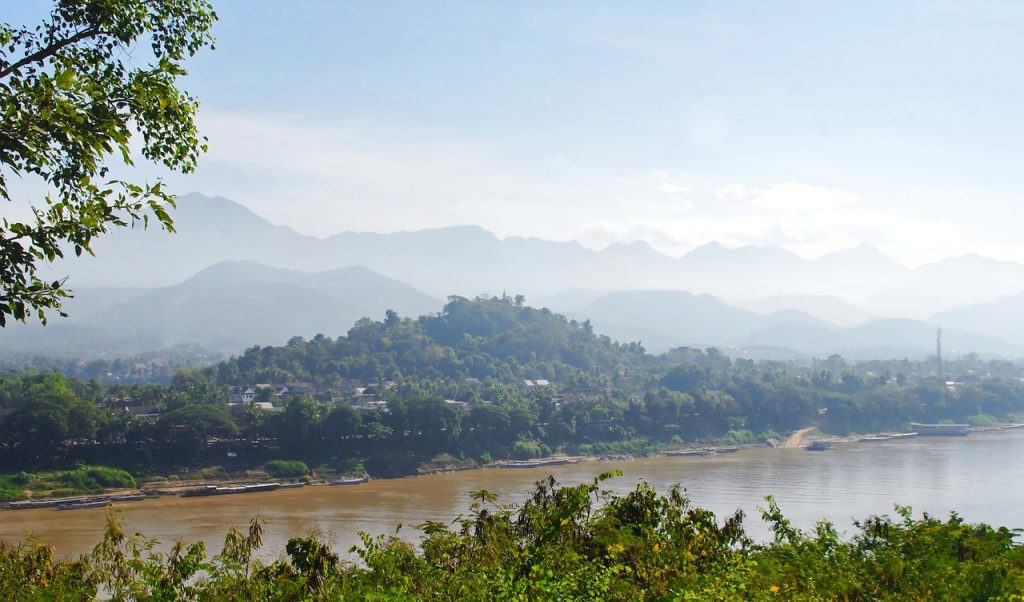
The Mekong River stands as the centerpiece of Southeast Asia, serving as a vital lifeline that traverses multiple countries including Vietnam, Cambodia, Thailand, Laos, and China. This majestic river holds immense ecological, cultural, and economic significance for the region, sustaining millions of livelihoods and nurturing a complex ecosystem.
Embarking on a Mekong River tour in Laos unveils a captivating experience that immerses visitors in the breathtaking beauty and cultural diversity of this Southeast Asian gem. As travelers leisurely drift along the tranquil waters, they are greeted by stunning vistas of verdant green fields, cascading waterfalls, and majestic limestone cliffs. The journey winds its way through idyllic riverside villages, offering glimpses into the traditional Laotian way of life and the warm hospitality of the locals.
The Mekong River tour in Laos unveils a plethora of mesmerizing sights and experiences. Marvel at the enchanting Pak Ou Caves, adorned with countless Buddha statues, as they provide a spiritual and awe-inspiring encounter. Explore the historic town of Luang Prabang, adorned with magnificent temples and vibrant marketplaces, immersing yourself in the rich heritage of Laos.
As the voyage progresses, time seems to slow down in the peaceful 4,000 Islands region. Here, travelers can relax and bask in the tranquility, surrounded by unspoiled natural beauty that captivates the senses. The journey along the Mekong River also tantalizes the taste buds with the flavors of Laotian cuisine, a culinary delight that showcases the country’s unique flavors and culinary traditions.
Encounters with floating marketplaces and vibrant celebrations along the river add a dynamic touch to the journey, offering glimpses into the vibrant local culture and traditions that thrive along the Mekong. Every moment spent on the Mekong River tour in Laos is filled with wonder and amazement, as travelers are exposed to the diverse landscapes, rich heritage, and the enduring allure of the mighty Mekong.
In conclusion, a voyage along the Mekong River in Laos is a truly magical adventure that allows visitors to embrace the stunning landscapes and cultural riches of this Southeast Asian nation. From the picturesque scenery and the warm hospitality of riverside communities to the spiritual encounters and vibrant marketplaces, the Mekong River tour offers an unforgettable experience that encapsulates the beauty and allure of Laos. As the mighty Mekong flows, it weaves a tapestry of natural wonders and cultural treasures, beckoning travelers to embark on an extraordinary journey of exploration and discovery.
4. Trek in Northern Laos
Step into Northern Laos’s beautiful landscapes, where emerald-green rice terraces, mist-covered mountains, and bright forests create a natural symphony. Explore secret routes that snake through secluded hillside settlements, where warm smiles and stories of ancestral peace greet you.
Majestic peaks give panoramic views, reminding you of the peace that exists beyond the tumult of contemporary life. Discover breathtaking waterfalls and plunge into their cool pools to experience nature’s embrace. Evenings are brought to life by blazing bonfires, laughing, and traditional melodies, connecting you to the lively culture that has defined these regions. On this wonderful walk, let Northern Laos’ infinite pleasure and beauty captivate your spirit.
5. Attend Festivals
Laos is a nation of lively customs, intriguing rituals, and happy festivities. It’s rich cultural legacy, provides a tapestry of festivals that will arouse your senses and transport you to a world of color, music, and spirituality. Attending festivals in Laos is a wonderful opportunity to see the country’s distinct cultural tapestry, from ancient rites to current festivities. Let us take a journey through the seasons and discover some of the most amazing events that bless this fascinating country.
Boun Pi Mai aka Lao New Year
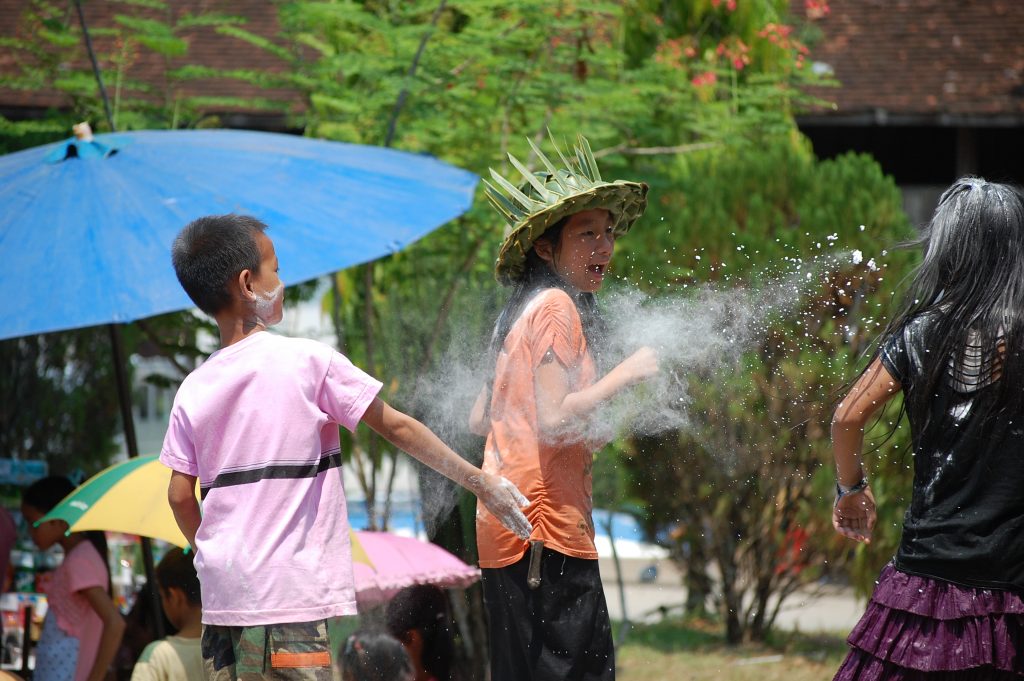
By Darren On The Road – originally posted to Flickr as DSC 1841, CC BY 2.0, https://commons.wikimedia.org/w/index.php?curid=4321425
As winter gives way to the blossoming spring, Laos comes alive with the exuberant Boun Pi Mai, the Lao New Year festival. This three-day celebration, held in mid-April, marks the start of the Lao lunar calendar. Imagine streets adorned with vibrant decorations, locals engaging in water fights, and the joyous sounds of drums and music filling the air. Boun Pi Mai is a time of renewal and cleansing, where the spirit of community and togetherness shines through.
That Luang Festival
The That Luang Festival, one of Laos’ most spectacular celebrations, takes place in November in Vientiane, the capital city. This festival centers on the magnificent That Luang Stupa, Laos’ national emblem. Pilgrims from all across the nation come to pay their respects to the stupa, partaking in Buddhist ceremonies and traditional sports and entertainment. The lively atmosphere of the event provides a look into Laos’ spiritual essence.
Boun Ok Phansa
Laos celebrates Boun Ok Phansa, the completion of the three-month Buddhist Lent period, with the coming of autumn. This October celebration is commemorated with processions of lit boats floating on rivers and lakes, representing the spiritual path of enlightenment. The combination of the flickering flame and the reflection on the lake produces a mesmerizing scene that conveys a sense of serenity and tranquility.
6. Slow Pace of Life
Similar to other mountainous countries I have visited, Laos possesses a distinctively unhurried approach to life. It is a nation where time seems to move at a more leisurely pace. Embracing the unhurried rhythm and laid-back atmosphere is key when experiencing Laos. It serves as a valuable reminder for us all to incorporate a slower pace into our own lives. It is important to be prepared for tasks and activities to take longer than expected or for schedules to be flexible. Patience and adaptability become essential qualities to navigate the easygoing nature of this country.
7. Homestays and Community
To truly immerse yourself in the essence of Laos, consider the invaluable opportunities presented by homestays and travel communities. During my own travels, I had the privilege of spending three days with a warm and welcoming Lao family, where I not only witnessed their daily rituals but also felt like an honorary member of their household.
Homestays offer a remarkable chance to forge deep connections with locals, fostering genuine cultural exchanges and leaving guests with lasting memories of authentic Lao hospitality. By embracing this intimate and enriching experience, you open the door to a world beyond typical tourist encounters, allowing the spirit of Laos to truly touch your heart.
8. Courtesy and Regional Traditions
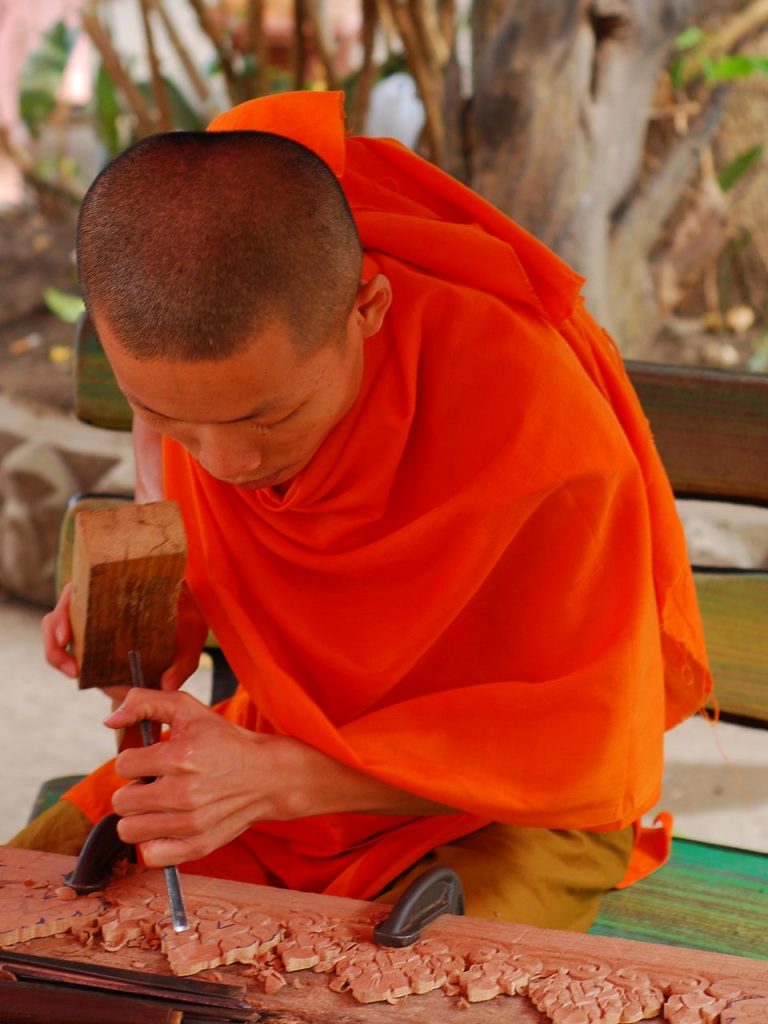
Vera & Jean-Christophe, CC BY-SA 2.0 https://creativecommons.org/licenses/by-sa/2.0, via Wikimedia Commons
Laos has a unique set of norms and decorum that travelers must conform to. A smile that is welcoming and a small bow are used to greet people, and respect for elders and monks is expected. Dress modestly, especially while visiting religious locations. Gifts should be given and received with both hands. It is vital to have a calm and serene demeanor in public. When visiting sacred locations, Lao cuisine is generally eaten communally, and temple decorum should be respected. By following these traditions, visitors to Laos can have a more meaningful and respectful experience.
9. Traditional Arts and Crafts
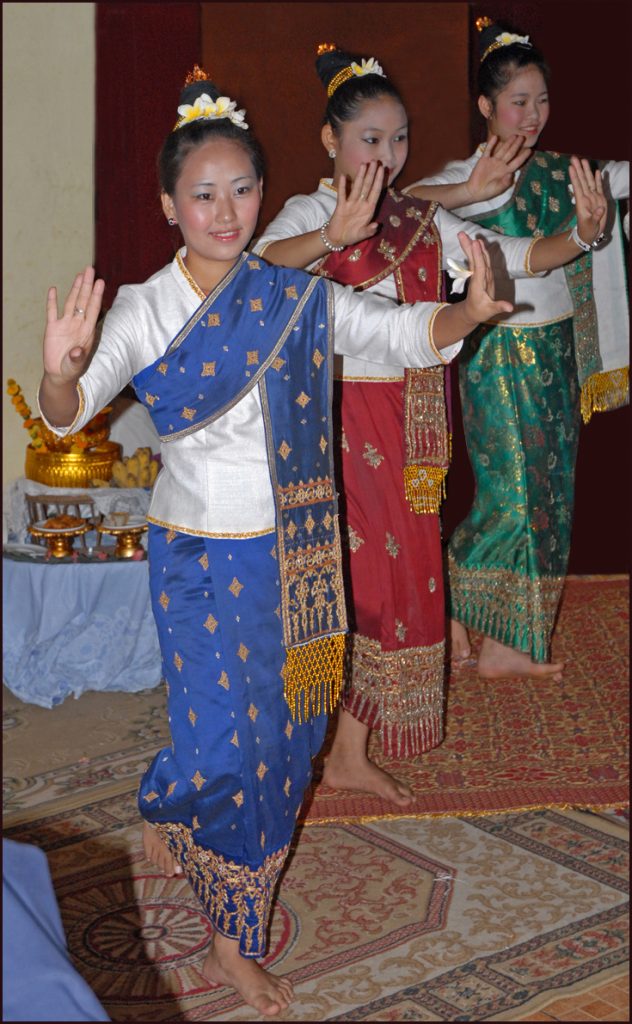
By dalbera – https://www.flickr.com/photos/dalbera/4333498591/, CC BY 2.0, https://commons.wikimedia.org/w/index.php?curid=11489522
Laos has a long history of arts and crafts. Explore local marketplaces and handicrafts towns to see the skilled work of silk artisans, woodwork carvers, and silver creators. Buying handmade souvenirs not only helps local communities but also brings a bit of Lao tradition home with you.
10. Transportation
Laos offers a comprehensive selection of transport alternatives to meet the different demands of visitors touring this interesting Southeast Asian country. Laos’ transport network reflects the country’s diverse geographies and cultural fabric, from the busy streets of major centers to the tranquil canals and rural villages.
The ubiquitous tuk-tuk is one of Laos’ most recognizable types of transportation. TukTuk plays a big role in the entire south Asia. These three-wheeled vehicles with colorful colors and designs are common in cities and towns.It is normal to negotiate the fee ahead of time to ensure a fair and suitable pricing for the travel. They provide a handy and economical mode of transportation, letting people to easily negotiate crowded streets and reach their destinations
11. UXO Legacy
For those unfamiliar with the term, UXO stands for Unexploded Explosive Ordnance. Tragically, during the Vietnam War, Laos endured a relentless onslaught of bombings, leaving behind a significant number of unexploded ordnances scattered throughout the country. To ensure your safety, it is crucial to stick to established pathways and refrain from venturing into unknown areas, particularly in rural regions where the risk of encountering UXOs may be higher. For those seeking a deeper understanding of the UXO problem and its impact, I highly recommend visiting the COPE Visitor Centre in Vientiane. This informative center sheds light on the issue and provides valuable insights into ongoing efforts to clear and mitigate the dangers posed by UXOs in Laos. By educating ourselves and raising awareness, we contribute to the collective endeavor of ensuring the safety and well-being of all individuals in these affected areas.
12. Internet and Communication
Laos has witnessed significant advancements and improvements in its internet and communication landscape. Although challenges persist, the accessibility to the internet has expanded notably, particularly in urban areas. According to Google, the average internet speed in Laos is 23.7 Mbps, which is satisfactory for various online activities such as browsing, video calls, and other tasks. The widespread use of smartphones has played a crucial role in bridging the digital divide, empowering more individuals to connect and access online resources.
Messaging apps have gained popularity as a cost-effective means of communication, facilitating messaging, voice calls, and video calls. While there are governmental regulations in place, Laos’ online environment remains dynamic, with individuals finding ways to navigate restrictions and access information. The digital landscape in Laos is evolving, reflecting the adaptability and resourcefulness of its people in embracing technology.
It is important to note that while progress has been made, disparities in internet access and speed may still exist, particularly in rural areas. Additionally, certain online platforms and services may be subject to occasional disruptions or limitations. However, the overall growth and improvements in the internet and communication sector in Laos signify a positive trend towards greater connectivity and integration in the digital age.
13. Money Exchange and Currency
The official currency in Laos is the Lao Kip (LAK), but it is worth noting that US dollars and Thai baht are widely accepted in major cities such as the capital, Luang Prabang, and Savannakhet. However, it is advisable to carry some cash with you as credit cards may not be accepted everywhere.
When it comes to currency exchange, it is recommended to exchange currencies at banks or authorized money changers to ensure fair rates. It is important to avoid exchanging money with unauthorized individuals who may offer higher rates but could potentially be involved in fraudulent activities. Beware of counterfeit notes, as there have been instances of scammers distributing fake currency. Exercise caution and remain vigilant to protect yourself from falling victim to such scams.
By exchanging currencies at reputable establishments and being aware of the potential risks, you can ensure a smooth and secure financial experience during your time in Laos.
14. Stay Hydrated
The climate in Laos can be characterized as hot and humid, and it’s important to take precautions to stay hydrated. Even at milder temperatures, the humidity can contribute to dehydration. To combat this, it is recommended to drink plenty of bottled water, especially when engaging in outdoor activities such as sightseeing.
In addition to water, you may also consider consuming electrolyte drinks, which can be found at local pharmacies and stores. These drinks help replenish essential minerals and nutrients lost through sweating, helping to maintain proper hydration levels.
By prioritizing hydration and being mindful of the weather conditions, you can ensure a more comfortable and enjoyable experience while exploring the wonders of Laos.
15. Language
Laos is a linguistically diverse country, with a remarkable total of 86 languages spoken among its 7.5 million population. However, the official language of Laos is Lao. It is worth noting that many young people in Laos have a good understanding of English and can communicate in the language. This is partly due to the significant number of tourists visiting the country, which has motivated locals to learn English. Therefore, language barriers are unlikely to pose a significant issue during your visit to Laos.
Prepare your luggage, open your senses, and get ready to embark on a transformative journey that will ignite your spirit and fill you with a sense of wonder. Laos calls out to those seeking to immerse themselves in its captivating stories, vibrant customs, and awe-inspiring natural beauty.
Remain open to the unexpected moments of connection and discovery that often arise while traveling through this remarkable nation. Each encounter in Laos has the power to leave an indelible mark on your soul, whether it’s the genuine smiles of the locals or the breathtaking vistas that unfold before your eyes.
Let your exploration of Laos become a cherished chapter in the narrative of your life, brimming with cherished memories and a profound appreciation for this extraordinary destination. Embrace the unique experiences that await you and allow Laos to weave its magic, leaving you with a lasting admiration for this remarkable place.
